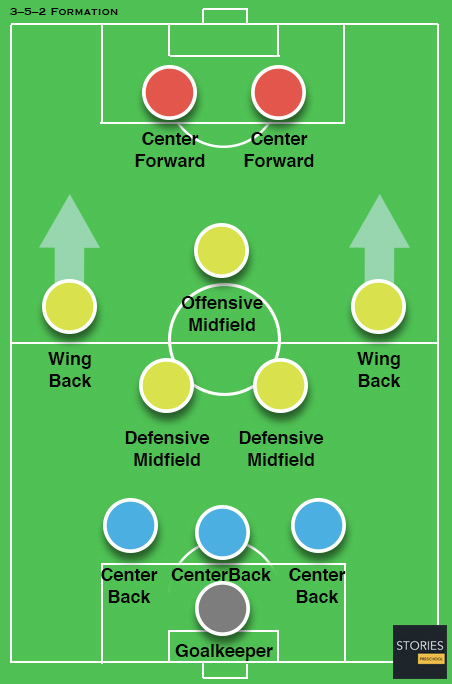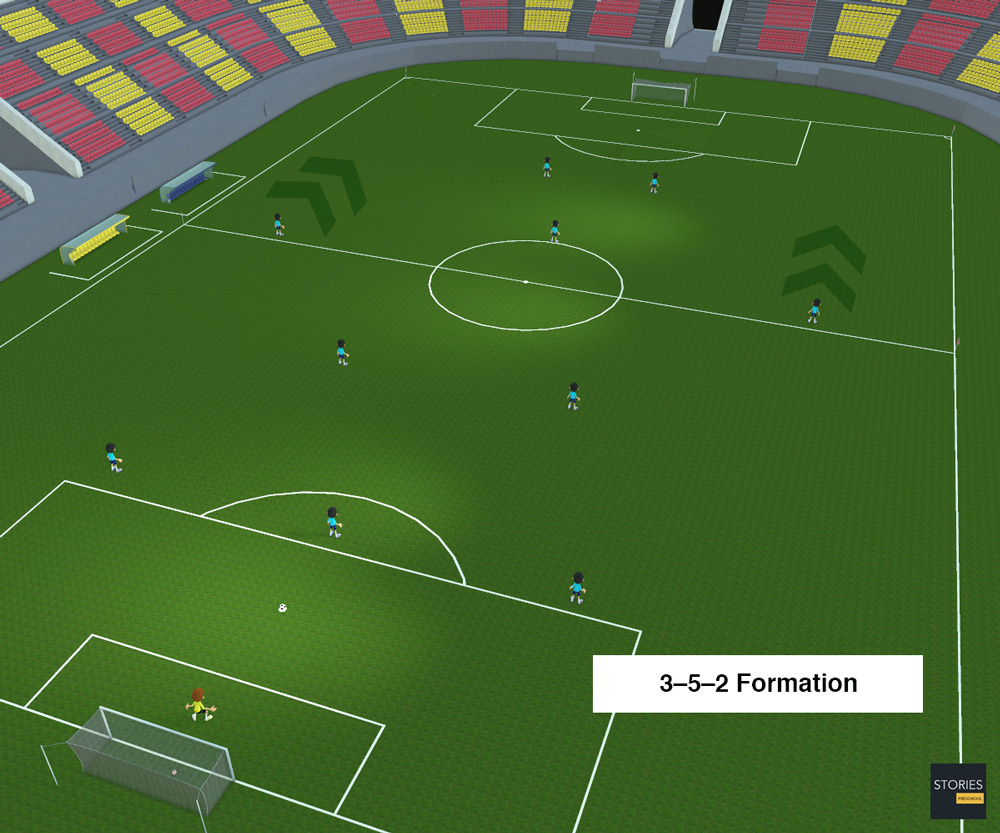Soccer

3–5–2 Formation
This formation is similar to 5–3–2 except that the two wingmen are oriented more towards the attack. Because of this, the central midfielder tends to remain further back in order to help prevent counter-attacks. It differs from the classical 3–5–2 of the WW by having a non-staggered midfield. It was used for the first time at international level by the Argentine coach Carlos Bilardo. Terry Venables notably used this formation (along with a diamond midfield) during England's campaign in Euro 96, with Gareth Southgate or Paul Ince acting as defensive midfielder. Many teams also use a central attacking midfielder and two defensive midfielders, so the midfielders form a W formation.

Sebastião Lazaroni also used this formation as manager of Brazil during their unsuccessful 1990 FIFA World Cup campaign. Although it had fallen out of favour with most coaches who now prefer four at the back, it has recently had a renaissance in both club and international football. At club level, it has been effectively used by Juventus coach Antonio Conte, under whom Juventus won three back-to-back scudetti between 2012 and 2014, or more recently by Louis Van Gaal at Manchester United.
At international level, it has been used as an alternative formation on two notable occasions to nullify the challenge of possession football used by the Spanish national side. Cesare Prandelli used it for the Italy's 1–1 draw with Spain in the group stage of UEFA Euro 2012, with some commentators seeing Daniele De Rossi as a sweeper. The Netherlands used it to greater effect against Spain during the group stage of the 2014 FIFA World Cup, completing a 5-1 win. This was successful in minimizing the Dutch weaknesses - inexperience in defence - and their strengths - world-class forwards in Robin van Persie and Arjen Robben.

SPORTS

RESOURCES
This article uses material from the Wikipedia articles "Association football" and "Formation (Association football)", which is released under the Creative Commons Attribution-Share-Alike License 3.0.
© Stories Preschool. All Rights Reserved.












